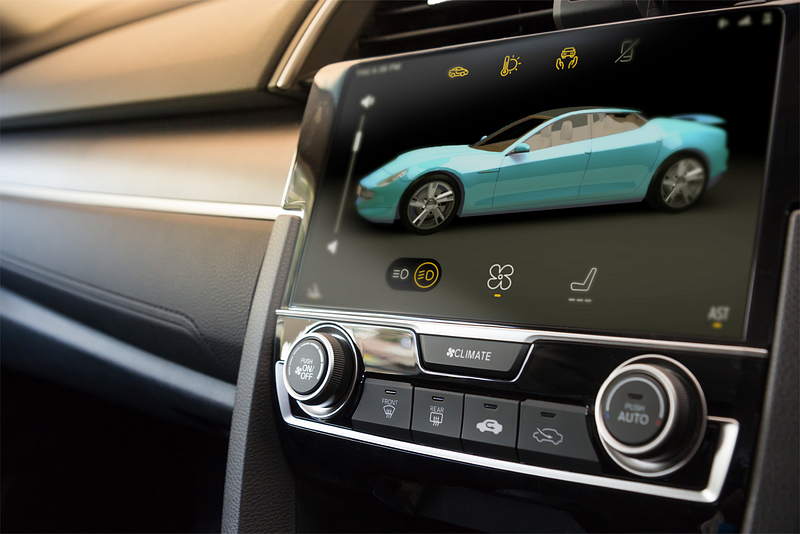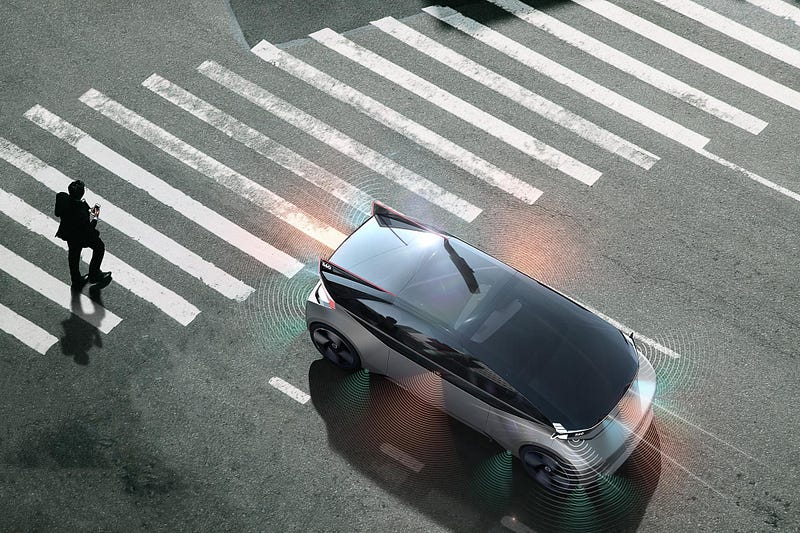The Haptics club is an Open community for #Haptics. It was founded by members of Unity, Interhaptics, Senseglove, and Nanoport. There is an event every other week with speakers from various industries and academia.
Do you want to listen to the full podcast?

Who are Filip Aleksandrow and Immersion?
Filip Aleksandrow is a Lead Interaction Design Architect and Haptic Designer at Immersion Corporation. Immersion is the world-leading innovator of touch feedback technology to create immersive and realistic experiences that enhance digital interactions on mobile devices. The company’s technologies have been adopted in more than three billion digital devices, including automotive, gaming, medical, mobile, and consumer electronics.
Why haptics in automotive?
Digital touch screens are becoming more and more common in cars. But one of the biggest issues is driver safety, and haptics becomes crucial for reducing the time the driver has his eyes off the road by transmitting information through touch. Cost reduction is a major advantage compared to mechanical buttons that the driver might not even use.
In what other areas haptics for automotive could be used?
Some companies are already looking for touch surfaces (textures, controlling through knobs with tactile feedback, or pedals and seats with haptic feedback…). There are many opportunities that Filip Aleksandrow likes to divide into four categories:
– Exploration haptics: find where the button is,
– Confirmation haptics: confirm that an action has been deployed,
– Information haptics: inform what kind of action has been deployed (button ON/OFF, decreasing/increasing volume),
– Skeuomorphing haptics: replication of physical interactions (mechanical buttons).

These different types of haptics do not necessarily have to be on a touch screen. They can be on the steering wheel, the seat belt, or pedals, for example.
The place of user experience
Haptics contributes intensively to cost reduction and safety for an automotive company, but what about the user experience? Tesla is a good example because it has over 600 different interactions and features on its touch screen. It contributes to user experience and is not just for safety, even though safety always comes first. Moreover, because safety regulations around the world are very diverse, haptics is quite hard to integrate because it has to follow the particular country’s laws.

The challenges faced by haptics today
Technical understanding of how to integrate haptics from an engineering perspective is a real challenge for the moment (connection from the screen to the car, choice of actuators, noise reduction, etc. …) is one of them. Another reason from a designer perspective is that many HMI automotive designers do not fully understand the potential and value of haptics in the automotive field.
Steering wheel haptic feedback to increase safety in the driving experience
According to Filip Aleksandrow, a lot of the haptics in automotive are copied from mobile. And it is concerning because, even though the user already knows these kinds of haptics, a designer should be inspired to create new kinds of haptics and be innovative. Haptics should be used to encourage the driver to keep his attention on the road, inform him that he needs a break, or remind him that he was supposed to pick something up before going home. And the major challenge is achieving this level of innovation without breaking privacy.

The future of haptics
Haptics in the automotive space has so much more to offer, not only for confirmation and skeuomorphic aspects but also for exploration and information. To do so, designers have to be aware of the value of haptics in cars and realize that it is more than just vibrations.
Who is the Haptics Club?
The Haptics Club was founded by Manuel Sansily from Unity, Ashley Huffman from Nanoport, Gijs den Butter and Irina Tripapina from Senseglove, and Eric Vezzoli and Sarah Alkibsy from Interhaptics.
Follow the Haptics Club on Twitter and LinkedIn to stay updated with the next events.
Who is Interhaptics?
Interhaptics is a software company specialized in haptics. Interhaptics provides hand interactions and haptic feedback development and deployment tools for virtual reality (VR), mixed reality (MR), mobile, augmented reality (AR), and console applications. Interhaptics’ mission is to enable the growth of a scalable haptics ecosystem. Interhaptics strives to deliver top-notch development tools for the VR/MR/AR, mobile, and console developer community, and the interoperability of haptics-enabled content across any haptics-enabled platform.







